Kasachstan |
|
|
|
| Übersicht – Contents: | |
Diese Seite ist Teil des Projektes
Kasachstan |
|
|
|
| Übersicht – Contents: | |
Flaggen – Flags: |
|
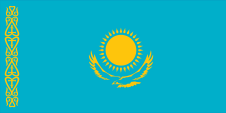 |
National- und Handelsflagge – national and merchant flag, Seitenverhältnis – ratio = 1:2, Quelle/Source, nach by: Flags of the World   |
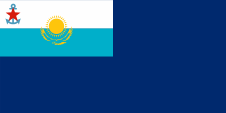 |
Dienstflagge zur See – official flag at sea, Seitenverhältnis – ratio = 1:2, Quelle/Source, nach by: Flags of all Nations |
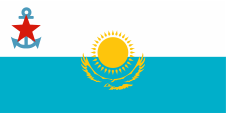 |
Marineflagge – naval flag, Seitenverhältnis – ratio = 1:2, Quelle/Source, nach by: Flags of the World |
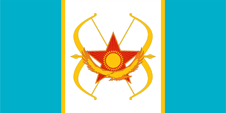 |
Flagge des Heeres – flag of the army, Seitenverhältnis – ratio = 1:2, Quelle/Source, nach by: Flags of the World |
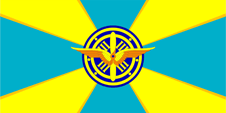 |
Flagge der Luftwaffe – flag of the air force, Seitenverhältnis – ratio = 1:2, Quelle/Source, nach by: Flags of the World |
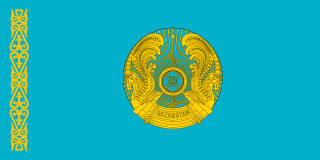 |
Flagge des Präsidenten – flag of the president, Seitenverhältnis – ratio = 1:2, Quelle/Source, nach by: Various, Public domain, via Wikimedia Commons |
historische Flaggen – historical Flags: |
|
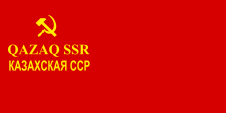 |
1937–1940, Flagge der Kasachischen Sozialistischen Sowjetrepublik – flag of the Kazakh Socialistic Soviet Republic, Seitenverhältnis – ratio = 1:2, Quelle/Source, nach/by: Wikipedia (DE) |
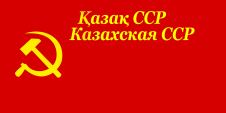 |
1940–1953, Flagge der Kasachischen Sozialistischen Sowjetrepublik – flag of the Kazakh Socialistic Soviet Republic, Seitenverhältnis – ratio = 1:2, Quelle/Source, nach/by: Wikipedia (DE) |
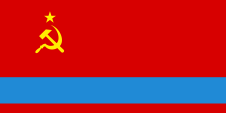 |
1953–1991, |
|
siehe auch – look also: Flaggengeschichte der Sowjetrepubliken der UdSSR – flag history of the soviet republics of the USSR |
|
|
|
|
Bedeutung/Ursprung der Flagge – Meaning/Origin of the Flag: |
|
| Einge Regionen im Norden des heutigen Kasachstans wurden 1731 von Russland abhängig, weitere Gebiete im heutigen Süden des Landes kamen 1868 an das Russische Reich und wurde dem Generalgouvernement Turkestan angegliedert. | Some regions in the North of the today's Kazakhstan became dependent on Russia in 1731, further areas in the today's south of the country came to the Russian Empire in 1868 and were affiliated with the Governor-Generalship of Turkestan. |
| Nach dem bolschewistischen Lenin-Putsch in Russland, war die Region einige Zeit umkämpft, auch riefen die Kasachen eine eigene Republik aus. Schließlich wurde die Sowjetmacht errichtet und aus den nörlichen Gebieten die Kirgische Autonome Sowjetrepublik gebildet und die südlichen Gebiete kamen an die Turkestanische Autonome Sowjetrepublik. 1925 wurde die Kirgisiche ASSR in Kasachische ASSR umbenannt und die nördlichen Teile der Turkestanischen ASSR angeliedert. | After the
bolshevist Lenin coup in Russia, the Region was embattled for some
time, also the Kazakhs proclaimed their own Republic. Finally, the
Soviet Power was established and the Kyrgyz Autonomous Soviet Republic
was formed from the Northern Territories, and the southern Territories
came to the Turkestan Autonomous Soviet Republic. In 1925, the Kyrgyz ASSR was renamed in Kazakh ASSR and the northern Parts of the Turkestan ASSR were annexed. |
| Für die einzelnen Sowjetrepubliken und Autonomen Sowjetrepubliken, die der UdSSR bis 1937 beitraten oder beitreten mussten, wurden zunächst nur einfache rote Flaggen angenommen, die meist in goldener Schrift die Abkürzung des Namens (z.B. TCCP oder T.C.C.P.) der Sowjetrepublik in lateinischer, kyrillischer oder auch anderer Schrift trugen. 1937 wurden diese Flaggen oft um Hammer, Sichel und Stern in Gold ergänzt. Zwischen 1949 und 1954 wurden die Flaggen der Sowjetrepubliken, oft unter der Hilfe einheimischer Künstler, völlig neu gestaltet. So erhiet letztlich jede Sowjetrepublik ihre eigene, individuell gestaltete Flagge, jedoch ohne einerseits auf die Farbe Rot als dominierende Farbe, und andererseits auf die Symbole von Hammer, Sichel und Stern zu verzichten. | For the separate Soviet
Republics and Autonomous Soviet Republics, which joined or had to join the USSR until 1937,
were initially adoped only simple red flags, which mostly showed in golden
letters the
abbreviation of the name (z.B. TCCP oder T.C.C.P.) of the Soviet republic in Latin,
Cyrillic or even other typeface. In 1937 these flags get mostly added by golden hammer, sickle
and star. Between 1949 and 1954 the flags of the Soviet republics, get, often by help of native artists, a complete new design. In this way every Soviet republic received its own, individual designed flag, however without to disclaim on the one hand to the color red as dominating color, and on the other hand to the symbols of hammer, sickle and star. |
| Die heutige Flagge Kasachstans wurde am 04.06.1992 eingeführt. Sie besteht aus einem hellblauen Fahnentuch mit einen senkrechten goldenen Ornamentband nahe der Fahnenstange. Das Zentrum der Flagge zeigt eine goldene Sonne und darunter einen fliegenden goldenen Adler, dessen ausgebreitete Schwingen die Sonne von unten umgeben. Die beiden wichtigsten Farben der Flagge, das Hellblau und das Gold werden mit Pantone 3125 und Pantone 102 angegeben. | The
today's flag of Kazakhstan was introduced on 4th of June in 1992. It
is a pale blue bunting with a vertical golden ornamental stripe
near the pole. The center of the flag shows a golden sun and underneath a flying golden eagle, its outspread wings encircle the sun from below. The two most important colours of the flag, the light blue and the gold are indicated with Pantone 3125 and Pantone 102. |
| Hellblau ist die traditionelle Farbe der turko-mongolischen Völker. Sie symbolisiert die ethnische Zugehörigkeit der Bevölkerung des Landes, und im Zusammenhang mit der goldenen Sonne die heißen Sommer des Landes unter einem blauem Himmel. Die Farbe steht auf der kasachischen Flagge auch für Wohlstand, Frieden und Einheit. Der Berkut-Steppenadler steht für Freigiebigkeit, Scharfsinn und Edelmut. Er wurde in der Vergangenheit zu Jagdzwecken abgerichtet, und steht so auch für traditionelle Lebensweise. | Pale blue is the traditional
colour of the Turko-Mongolian nations. |
| Quelle/Source: Wikipedia (D), Flaggen-Atlas Erde, Nationalflaggen der Welt, Flaggen und Wappen der Welt | |
Wappen – Coat of Arms: |
|
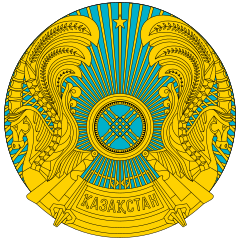 |
seit/since 1992, Wappen von Kasachstan – coat of arms of Kazakhstan, Quelle/Source: Bingread [Public domain], via Wikimedia Commons |
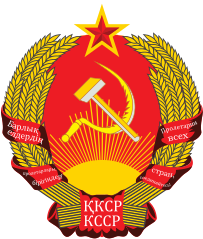 |
1939–1978, Wappen der Kasachischen Sozialistischen Sowjetrepublik – Coat of arms of the Kazakh Soviet Socialist Republic, Quelle/Source: TheSign 1998, Public domain, via Wikimedia Commons |
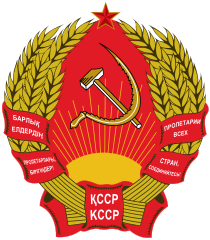 |
1978–1991, Wappen der Kasachischen Sozialistischen Sowjetrepublik – Coat of arms of the Kazakh Soviet Socialist Republic, Quelle/Source: Jam123, Public domain, via Wikimedia Commons |
Bedeutung/Ursprung des Wappens – Meaning/Origin of the Coat of Arms: |
|
| Das heutige Staatswappen (Emblem) von Kasachstan wurde 1992 eingeführt und zeigt in seiner Mitte eine Schanyrak-Jurte, deren Streben wie Sonnenstrahlen von allen Seiten kommend die Jurte treffen, was für Heimat und Kosmos steht. Links und rechts sieth man je ein mystisches Pferd – was die Tradition verkörpert – und oben einen fünfzackigen Stern. Er steht für edle Gedanken und Sehnsüchte. Im unteren Bereich sieht man auf einem Spruchband den Namen des Landes in Kyrillischer Schrift. |
The today's coat of arms
(national emblem9 of Kazakhstan was introduced in 1992 and shows a Shanyrak
Yurt in its centre, whose struts meet the yurt like rays of sunlight coming
from all sides, what stands for homeland and cosmos. On the left and right you see a mystical horse – which embodies tradition – and on top a five-pointed star. It stands for noble thoughts and longings. At the bottom, a banner shows the name of the country in Cyrillic script. |
| Quelle/Source: Flaggen und Wappen der Welt | |
Flugzeugkokarde – aircraft roundel: |
|
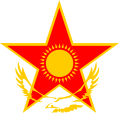 |
Flugzeugkokarde – aircraft roundel Quelle/Source, nach/by: Wikipedia (EN) |
Landkarte – Map: |
Lage – Position: |
Landkarte des Landes – Map of the Country: |
Zahlen und Fakten – Numbers and Facts: |
|
|
|
|
|
|
|
|
|
|
|
|
|
|
|
|
|
|
|
|
|
|
|
|
Geschichte: |
| 6. Jhd. ·
Besiedelung durch verschiedene Turkvölker 10. Jhd. · Herrschaft der Karachaniden 1089 · teilweise Eroberung durch die Seldschuken 1219 · Eroberung und Herrschaft durch die Mongolen unter Dschingis Khan 1227–1280 · das Gebiet des heutigen Kasachstan gehört zum Reich des Tschagatai, eines Sohnes des Dschingis Khan 14. Jhd. · mit dem Verfall der Mongolenreiche bildet sich im Gebiet des heutigen Kasachstan das Khanat Mogolistan, später Zerfall in drei kasachische Horden 1731 · Russland unterwirft die nördlichen und westlichen Randgebiete des Kasachengebietes 1824–1853 · Russland erobert das gesamte Kasachengebiet 1832 · Gründung von Akmolinsk 1854 · Gründung von Fort Werny 1865 · Bildung des Generalgouvernements Turkestan, damit Anschluss an Russland 19.–20. Jhd. · gezielte Ansiedlung von russischen und deutschen Bauern zur Erschließung neuer landwirtschaftlicher Flächen 1917–1920 · Bürgerkrieg zwischen Bolschewisten, Anti-Bolschewisten und kasachischen Nationalisten, Proklamation der Republik Kasachstan 1920 · Errichtung der Sowjetdiktatur, Gründung der Kirgisischen Autonomen Sozialistischen Sowjetrepublik (innerhalb Sowjetrusslands – Russische Sozialistische Föderative Sowjetrepublik) auf dem Gebiet des heutigen Kasachstan 1921 · Umbenennung von Fort Werny in Alma-Ata 1925 · Umbenennung der Kirgisischen Autonomen Sozialistischen Sowjetrepublik in Kasachische Autonome Sozialistische Sowjetrepublik (innerhalb Sowjetrusslands) 1929 · Alma-Ata wird Hauptstadt der Kasachischen Autonomen Sozialistischen Sowjetrepublik 1930 · sowjetisches Kollektivierungsprogramm, gezielte Besiedlung durch Russen → Tod von ca. einer Million Kasachen 1932 · die Karakalpakische Autonome Sozialistische Sowjetrepublik (Karakalpakische ASSR), wird von der Kasachischen Autonomen Sozialistischen Sowjetrepublik abgetrennt und der RSFSR (Sowjet-Russland) angeschlossen 1936 · Erhebung der Kasachischen Autonomen Sozialistischen Sowjetrepublik (als Teil Sowjetrusslands) zur Kasachischen Sozialistischen Sowjetrepublik (als Teil der Sowjetunion) 1941–1945 · Ansiedlung Hunderttausender von Rußlanddeutschen, Tataren und Juden in den Kasachischen Steppen, wegen angeblicher Kollaboration mit Deutschland 1954–1960 · sinnlose landwirtschaftliche Reformen führen zu steigender Misswirtschaft, weitere gezielte Besiedlung durch Russen 1957 · die zwangsweise umgesiedelten Nationen dürfen teilweise zurückkehren, jedoch nicht die Deutschen 1959 · in Kasachstan leben mehr Russen als Kasachen, daraufhin werden Kasachen aus anderen Republiken der Sowjetunion angesiedelt 1961 · Umbenennung von Akmolinsk in Zelinograd 1986 · antirussische Aufstände in Alma-Ata 1990 · Unabhängigkeitserklärung (Austritt aus der Sowjetunion) 1991 · die Unabhängigkeit Kasachstans wird anerkannt 1992 · Umbenennung von Zelinograd in Akmola 1993 · Einführung einer neuen Verfassung und einer neuen Währung 1995 · Einführung einer neuen Verfassung, Beginn der Vertreibung/Auswanderung der Russen und Deutschen 1997 · Beistandspakt zwischen Kasachstan, Kirgisien und Usbekistan 1997 · Verlegung der Hauptstadt von Alma-Ata nach Akmola 1998 · Umbenennung von Akmola in Astana |
History: |
| 6th cent.
· settlement by diverse Turkish peoples 10th cent. · rule of the Karakhanids 1089 · partial conquest by the Seljuqs 1219 · conquest and rule by the Mongols under Dschinghis Khan 1227–1280 · the region of the today's Kazakhstan belongs to the Empire of the Tshagatai, son of Dschinghis Khan 14th cent. · with the decay of the Mongolian empires comes into being in the region of the today's Kazakhstan the Khanate of Mogolistan, later disintegration into three Kazakh hordes 1731 · Russia subjects the northern and western outskirts of the Kazakh region 1824–1853 · Russia conquers the whole Kazakh region 1832 · foundation of Akmolinsk 1854 · foundation of Fort Werny 1865 · formation of the Governor-Generalship of Turkestan, in this way annexion to Russia 19th–20th cent. · deliberated settlement by Russian and German farmers for development of new agricultural areas 1917–1920 · civil war between Bolshevists, Anti-Bolshevists and Kazakh nationalists, proclamation of the Republic of Kazakhstan 1920 · establishment of the Soviet Dictatorship, foundation of the Kirghiz Autonomous Socialistic Soviet Republic (within Soviet Russia – Russian Socialistic Federative Soviet Republic) on the territory of the today's Kazakhstan 1921 · rename of Fort Werny in Alma-Ata 1925 · rename of the Kirghiz Autonomous Socialistic Soviet Republic in Kazakh Autonomous Socialistic Soviet Republic (within Soviet Russia) 1929 · Alma-Ata becomes capital of the Kazakh Autonomous Socialistic Soviet Republic 1930 · soviet collectivation program, deliberated settlement by Russiand → death of ca. one million Kazakhs 1932 · the Karakalpak Autonomous Socialistic Soviet Republic (Karakalpak ASSR) becomes separated from the Kazakh Autonomous Socialistic Soviet Republic and annexed to the RSFSR (Soviet Russia) 1936 · elevation of the Kazakh Autonomous Socialistic Soviet Republic (as a part of Soviet Russia) to the Kazakh Socialistic Soviet Republic (as a part of the Soviet Union) 1941–1945 · forced settlement of hundred thousends of Russia-Germans, Tatars and Jews in the Kazakh prairies, because of alleged collaboration with Germany 1954–1960 · senseless agricultural reforms bring rising mismanagement, further deliberated settlement by Russians 1957 · the enforced resettled nations is it allowed to return partially, however not the Germans 1959 · in Kazakhstan live more Russians as Kazakhs, as a result of that get resettled Kazakhs from other republics of the Soviet Union 1961 · rename of Akmolinsk in Zelinograd 1986 · anti-Russian riotings in Alma-Ata 1990 · declaration of independence (withdrawal from the Soviet Union) 1991 · the independence of Kazakhstan is recognized 1992 · rename of Zelinograd in Akmola 1993 · introduction of a new constitution and a new currency 1995 · introduction of a new constitution, beginning with the expulsion/emigration of the Russians and Germans 1997 · support pact between Kazakhstan, Kyrgyzstan and Uzbekistan 1997 · transfer of the capital from Alma-Ata to Akmola 1998 · rename of Akmola in Astana |
| Quelle/Source: Atlas zur Geschichte, World Statesmen, Die Völker der Erde, Wikipedia (DE) |
Ursprung des Landesnamens – Origin of the Country's Name: |
|
| Der Name des Landes leitet sich von den Kasachen ab, ein Turkvolk, das hier seit dem 15. Jahrhundert lebt. Es entstand um 1450 durch Abspaltung vom Usbeken-Khanat. Der Name der Kasachen geht auf das alttürkische Wort "qasaq" zurück, was "Steppenreiter" heißt. | The country's name derives from the Kazakhs, a Turkic people who have lived here since the 15th century. It was formed around 1450 by secession from the Uzbek Khanate. The name of the Kazakhs goes back to the Old Turkic word "qasaq", which means "steppe rider". |
| Quelle/Source: Atlas der wahren Namen | |